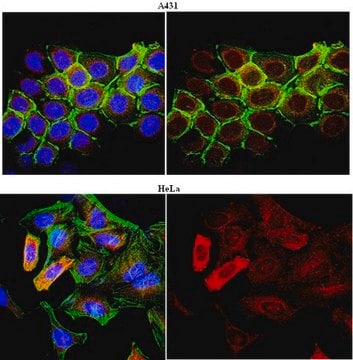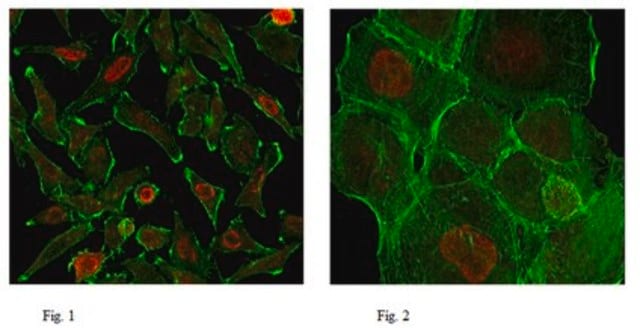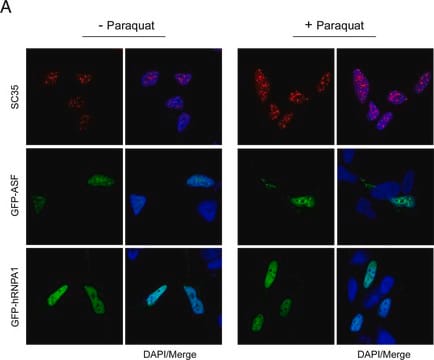04-1572-I
Anti-RNA polymerase II subunit B1 (phospho-CTD Ser-5) Antibody, clone 3E8
culture supernatant, clone 3E8, from rat
Synonym(s):
DNA-directed RNA polymerase II subunit RPB1, RNA polymerase II subunit B1, DNA-directed RNA polymerase II subunit A, DNA-directed RNA polymerase III largest subunit, RNA-directed RNA polymerase II subunit RPB1
About This Item
Recommended Products
biological source
rat
Quality Level
antibody form
culture supernatant
antibody product type
primary antibodies
clone
3E8, monoclonal
species reactivity
mouse
species reactivity (predicted by homology)
human (immunogen homology)
technique(s)
ChIP: suitable
ELISA: suitable
western blot: suitable
isotype
IgG2aκ
NCBI accession no.
UniProt accession no.
shipped in
dry ice
target post-translational modification
phosphorylation (pSer5)
Gene Information
human ... POLR2B(5431)
General description
Specificity
Immunogen
Application
ELISA Analysis: A representative lot was used by an independent laboratory to detect RNA polymerase II subunit B1 (phospho-CTD Ser-5) in ChIP (Chapman, R., et al. (2007). Science. 318(5857):1780 -1782.).
Epigenetics & Nuclear Function
Transcription Factors
Quality
Western Blot Analysis: A 1:2,000 dilution from a representative lot detected RNA polymerase II subunit B1 (phospho-CTD Ser-5) in 10 µg of untreated and lambda phosphotase treated NIH/3T3 cell lysates.
Target description
Linkage
Physical form
Storage and Stability
Handling Recommendations: Upon receipt and prior to removing the cap, centrifuge the vial and gently mix the solution. Aliquot into microcentrifuge tubes and store at -20°C. Avoid repeated freeze/thaw cycles, which may damage IgG and affect product performance.
Analysis Note
Untreated and lambda phosphotase treated NIH/3T3 cell lysates
Disclaimer
Not finding the right product?
Try our Product Selector Tool.
Storage Class Code
10 - Combustible liquids
WGK
WGK 1
Certificates of Analysis (COA)
Search for Certificates of Analysis (COA) by entering the products Lot/Batch Number. Lot and Batch Numbers can be found on a product’s label following the words ‘Lot’ or ‘Batch’.
Already Own This Product?
Find documentation for the products that you have recently purchased in the Document Library.
Our team of scientists has experience in all areas of research including Life Science, Material Science, Chemical Synthesis, Chromatography, Analytical and many others.
Contact Technical Service








